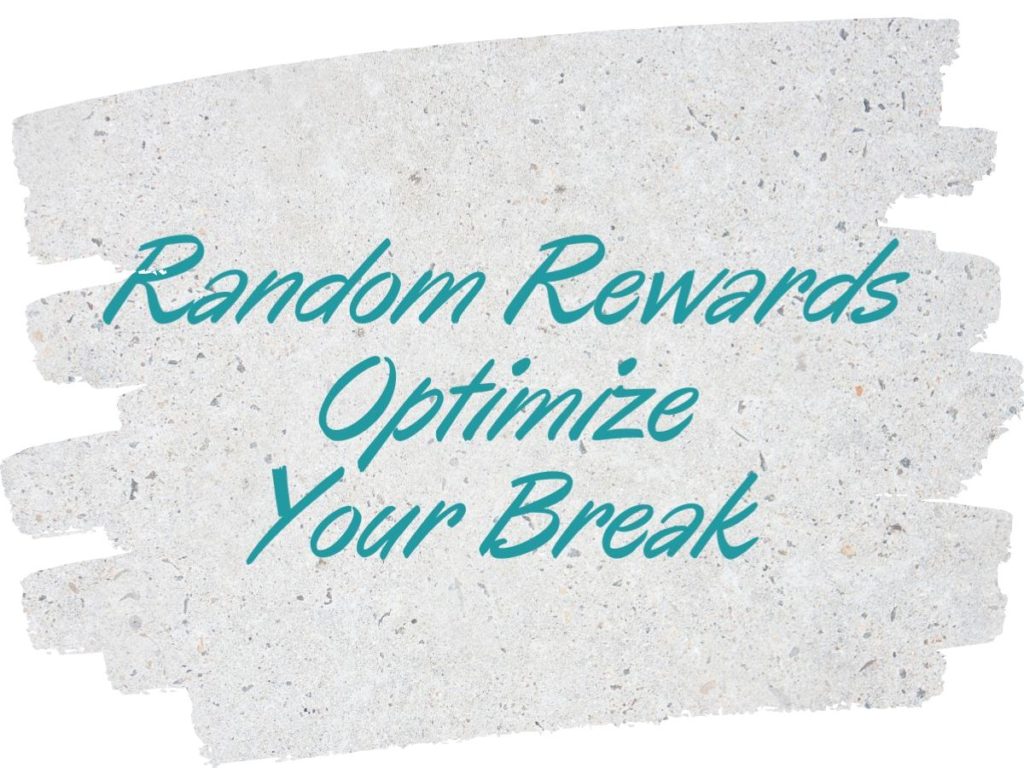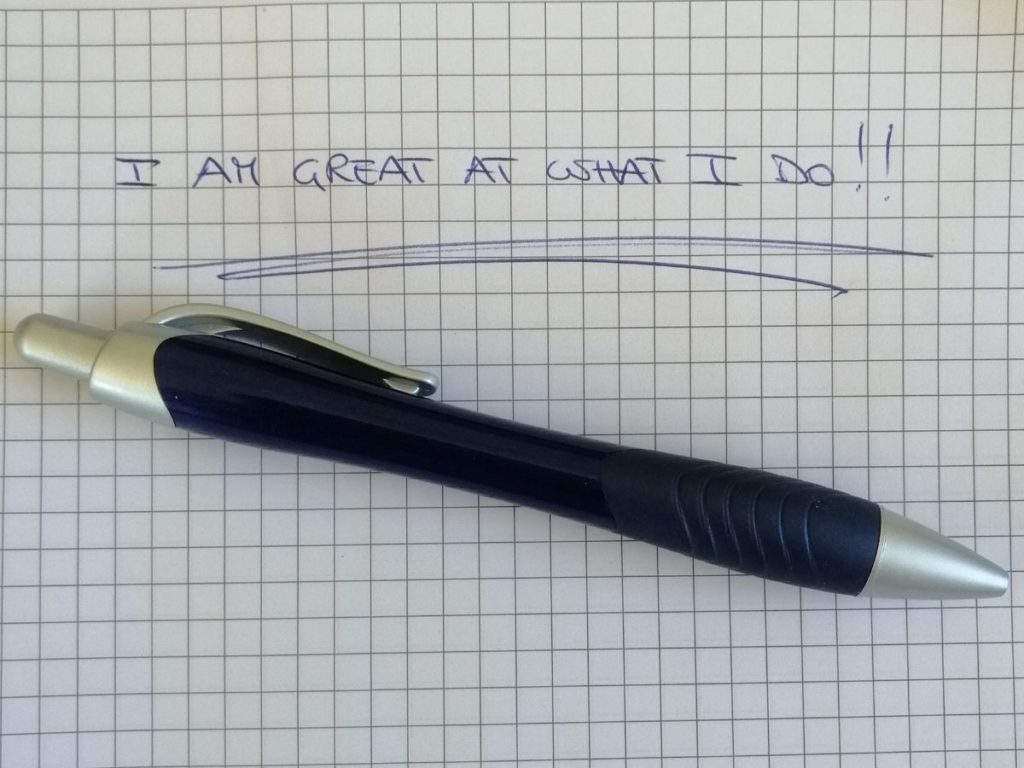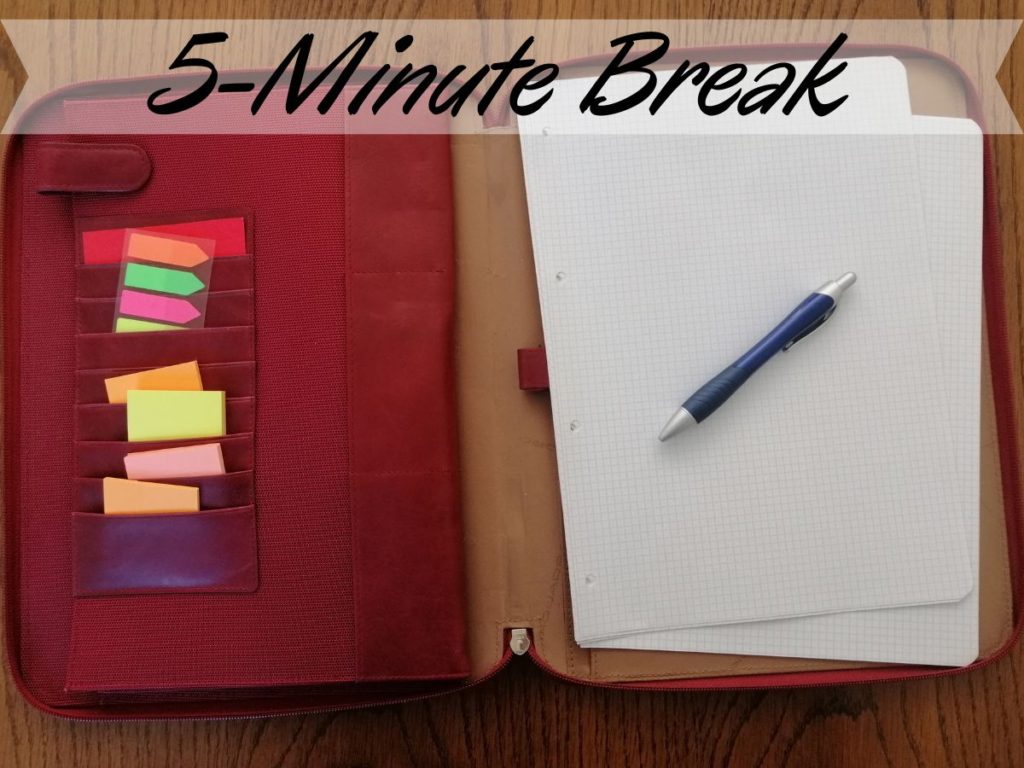A 5-minute break can be an invaluable tool to boost productivity and morale. This post shows how to structure a 5-minute break that works for you.
Breaks are an essential part of our productivity-boosting strategy. When thinking about productivity we often only think about work, but without breaks no working path is sustainable. Optimizing productivity is about lowering stress and increasing possibilities, while creating a fulfilling framework for us. One technique mentioned in one of our productivity-optimization posts is the Pomodoro technique. Its break structure is essential to exploit the technique to the fullest.
The Pomodoro technique helps you manage your time and increase your focus. As mentioned in that post, the technique requires that you divide your time into slots. There will be a 25-minute slot dedicated to performance, and a 5-minute slot dedicated to a break.
Those five-minute breaks can help you not only relax but also build your day and strategy in the best way possible for you. There are two essential parts that should constitute your break:
- the reward;
- the relaxing activity.
Both are important and should be carried out intentionally and strategically.
The 5-minute Break Reward
Rewarding effort is essential to get the most out of your break. The reward doesn’t need to be anything extravagant or life-changing, but it needs to feel like a reward in that specific moment. It is something that tells your brain and your whole nervous system “Good job on doing your thing!”. It is a good idea to have a pool of rewards to choose from something that can make you feel better at that specific time.
Why is it Important to Reward Effort?
The concept of reward has been associated to achievements for a long time. However, it is important to also reward effort. Everybody enjoys the cup won at the end of a sports tournament. Of course that is a reward worth having. Rewarding the efforts that lead us towards our goal, though, will make our path easier.
The Dopamine Push
Effort rewarding plays a key role in the dopamine “game” our brain plays. Dopamine is a molecule in our brain that is linked to motivation and the ability to focus. It is an important tool for achieving our goals. Our brain produces dopamine as a response to stimuli. We all have a dopamine baseline, and we can have spikes – which make us feel better – and drops. The peculiarity of dopamine is that, according to Stanford professor Dr. Anna Lembke, it is tied with the concept of pursuit. Other molecules in our brain, instead, are more linked to enjoying what we already have. Dopamine can make our path to success so much easier – or harder – depending on the production pattern it takes in our brain.
The reward you give yourself during a break can positively impact dopamine production. It can generate a spike, and it can allow you to reach your goal faster and more efficiently. It also allows you to reach it in a more serene way and with a higher sense of purpose. When you are giving yourself a reward during your break, you are rewarding effort. Your brain won’t have an achievement to which tie the dopamine spike, and it will link it to the effort, making it more enjoyable over time.
Should You Reward Yourself at Every Break?
IT DEPENDS
When you start off, it may be appropriate to give yourself a reward at every break, just to train your brain to associate the behavior you are carrying out – your effort – with being rewarded.
Once this association is established, you should build a random and intermittent reward system.
The positive effects of rewarding your effort are maximized when the reward is given intermittently and randomly. This means that you won’t get a reward at every break, but you will get it once in a while. You should pay attention not to build a pattern where you reward yourself only when a task is completed, otherwise the reward will only be for achievements and not effort. Celebrate some milestones, celebrate some effort sessions, just don’t celebrate them all.

Why Do You Need a Random Reward?
The randomness of the rewarding process will allow your brain to better modulate the dopamine response and will keep you motivated and focused, allowing you to build the habits you want and the working pattern you desire.
A side benefit of learning the structure of a random and intermittent reward system is that you can recognize it when others use it in a manipulative way in personal and working relationships. This won’t have a direct effect on your productivity, obviously, but it could have a positive effect on your balance overall, leading you to be more successful in the end. The people we choose in our surroundings have an impact on our own development path.
Which Type of Reward Should You Choose?
The type of reward you choose is extremely personal. It may be something practical you do or something external you experience.
Have you decided to buy yourself something you have desired for a while? Why not do it during one of your breaks, so to experience it as a reward for your efforts? Were you waiting to try that new flavoured yogurt you bought yesterday? Do it as a reward. It doesn’t matter exactly what you choose, but it is important that your brain perceives it as a reward, and that what you choose doesn’t harm yourself, obviously.
A great and fast way to reward yourself during the breaks would be to praise yourself. Reading out loud positive affirmations you wrote about yourself can serve a dual purpose: it will work as a reward, and it may possibly improve your sense of self-worth while giving you a variety of benefits.
A 2016 study by Dutcher at Al. found that positive self-affirmations do, indeed, activate the neural patterns linked to the reward mechanism, and a 2018 study by Gu et Al. found that self-affirmations may help a person cope with uncertainty, which is a feeling often present when a person embarks on a new project, tries building a new habit and tries to change things in general.

The 5-minute Break Relaxing Activity
During your five-minute break you will probably do something. Sitting on the couch while doing nothing in those five minutes is an acceptable activity since each of us is different. However, giving your brain a break also means stimulating its interest in non-pressuring ways.
Sunlight
Safely exposing yourself to natural sunlight during the 5 minute break would be ideal. You may have a balcony, so you can easily get out, breathe some fresh air and get that light in. Alternatively, you may choose to just open your window and look outside. While proper prevention to protect skin is essential, natural light is extremely important to modulate our nervous system, as already mentioned in our quick morning routine post. Its benefits are multiple. One of those is that sunlight can regulate your serotonin levels and put you in a good mood. When you get the chance, you should get outside.
Wherever you choose to do it, choose an easy activity for your break, one that can possibly entertain your brain and lift the pressure. Listen to a song you like, read those couple of pages of the book you are enjoying, get up and stretch. Choose from a variety of activities that do not create any negative feeling and do not require too much effort. Your brain needs a break and, while the distraction is entertaining, the pressure of having to achieve something else is not.
The 5-minute Break Guidelines
When taking a 5-minute break, pay attention to the following:
- Working on the rewarding system and, eventually, creating a random and intermittent reward system will maximize the benefits you can gain from your breaks.
- Among the activities we choose to reward ourselves, including positive self-affirmations as praise could greatly benefit us in a variety of ways.
- When choosing an activity to do during our break, we should choose something that entertains our brain but doesn’t force it to focus on producing a result through effort.
- Safely exposing ourselves to sunlight, during the breaks and even during working sessions, will greatly benefit our health and nervous system.






